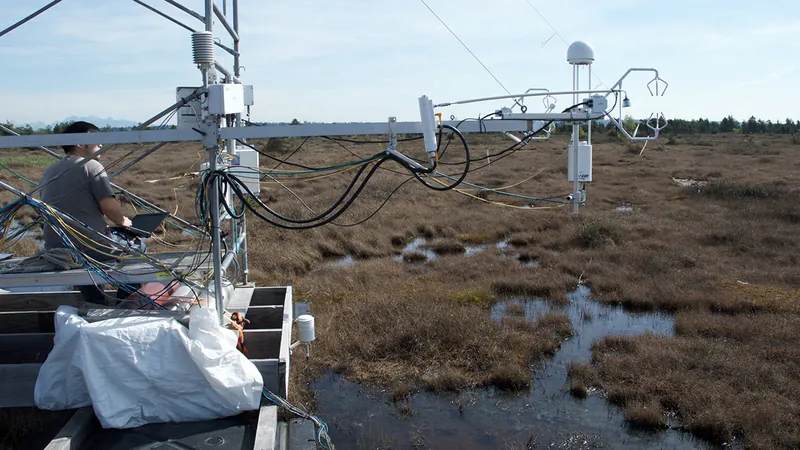
Unveiling the Impact of Extreme Weather on Wetland Methane Emissions: A Climate Crisis Alert!
2024-11-20
Author: Jia
Introduction
Human-induced climate change is reshaping our planet, leading to an alarming rise in extreme weather events. These include unprecedented heat waves, transformative droughts, and intense precipitation patterns that are not just temporary phenomena; they significantly disrupt the intricate balance of our ecosystems.
A striking example of this was the 2003 European heat wave, the hottest summer recorded in centuries, which caused a devastating die-off of Sphagnum moss in alpine bogs—resulting in a recovery period that spanned at least four years.
Impact on Greenhouse Gas Exchange
As ecosystems struggle to cope under these harsh conditions, the exchange of greenhouse gases between terrestrial, aquatic, and atmospheric systems is also altered. For instance, during extreme heat events, plants often close their stomata—tiny openings used for carbon absorption—to prevent water loss, inadvertently increasing atmospheric carbon levels and creating a feedback loop that intensifies global warming.
Wetlands and Methane Emissions
Of particular concern are wetlands, which serve as essential ecological hubs and are the largest natural source of atmospheric methane, a potent greenhouse gas. Recent research by Lippmann et al. utilized a global network of 45 flux tower sites to study how extreme climate conditions affect methane emissions.
Analyzing climate data from January 1982 to December 2020, they identified both discrete (pure heat) and compound (heat combined with drought) extreme weather events.
Key Findings
Their findings were revealing: methane emissions spiked significantly during compound extreme events compared to singular heat or drought conditions.
In particular, hot-and-dry events drove the highest increases in emissions, highlighting the interconnectedness of these climate stressors.
Conversely, prolonged drought periods resulted in substantial declines in methane emissions, indicating that the underlying dynamics of wetland ecosystems can be dramatically altered by climate extremes.
Interestingly, heavy rainfall alone did not show a significant effect on methane emissions—an insight that challenges previous assumptions about the role of soil saturation in microbial methane production.
Seasonal Sensitivity and Long-term Effects
The sensitivity to these extreme events varied by season and wetland type; marshes and upland sites were particularly affected.
Even more concerning, the effects of extreme climate events can linger for over a year after the event has passed, suggesting that ecosystems could face prolonged alterations in their functioning.
Conclusion and Call to Action
As we grapple with a climate that is trending toward more frequent hot extremes and fewer cold spells, the implications for wetland methane emissions are significant.
As the climate crisis deepens, understanding these relationships becomes critical for predicting future greenhouse gas emissions and their impact on global warming.
The urgency to act has never been clearer. Are we prepared to face the consequences of these environmental changes and their implications for our planet? The time to address the climate crisis is now, before it’s too late.



 Brasil (PT)
Brasil (PT)
 Canada (EN)
Canada (EN)
 Chile (ES)
Chile (ES)
 España (ES)
España (ES)
 France (FR)
France (FR)
 Hong Kong (EN)
Hong Kong (EN)
 Italia (IT)
Italia (IT)
 日本 (JA)
日本 (JA)
 Magyarország (HU)
Magyarország (HU)
 Norge (NO)
Norge (NO)
 Polska (PL)
Polska (PL)
 Schweiz (DE)
Schweiz (DE)
 Singapore (EN)
Singapore (EN)
 Sverige (SV)
Sverige (SV)
 Suomi (FI)
Suomi (FI)
 Türkiye (TR)
Türkiye (TR)